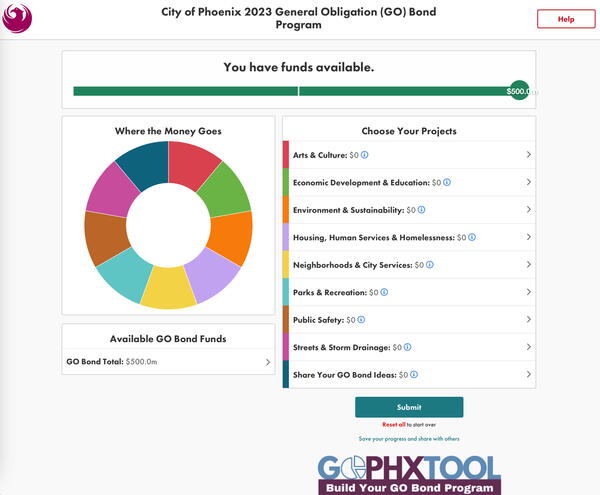
If we’ve learned anything from the pandemic-era whipsaw economy, it’s that local governments function better when they establish two-way communication with their constituents, no matter the conditions.
After two years of years of dramatic fiscal downturns from the COVID-19 pandemic, followed by rebounds from once-in-a-generation federal support through American Rescue Plan Act (ARPA) funds and increases in sales and property tax revenues, local governments now face inflationary pressures and a possible economic downturn. In the 2022 City Fiscal Conditions report by the National League of Cities, nine out of 10 finance officers surveyed expressed optimism in their ability to meet financial needs in 2022 compared with the previous year, but looming fear of a recession led many municipal governments to implement conservative approaches to their 2022 budgets.
The Benefits of Communication and Engagement
Following the Great Recession of 2007 to 2009, research showed that cities that invested in public engagement were best able to weather the challenges. One research paper using ICMA data found that “in participatory cities, nothing is off the table when dealing with a fiscal crisis.” When a local government invests in the ability to have fact based, two-way communication with residents, it has more options to deal with the crisis, including unpopular ones such as cutting services or raising taxes.
Likewise, cities, counties, school districts, and other public entities that leaned into public engagement during the pandemic now have strategies in place to prepare for the
impact of a recession and any tough tradeoffs required to balance future budgets.
For those that haven’t increased engagement efforts, it’s not too late to strengthen the conversation with constituents. Education and engagement strategies can be institutionalized in budget and planning processes, especially as more residents come to expect more than two minutes at the mic.
What does that look like? In the simplest terms, residents must hear from their local government about its budget and priorities; and the local government must listen to residents about theirs. This communication is most effective when technology is used to broaden outreach and deepen input in a regular cadence that builds understanding—even empathy—for the difficult tradeoffs inherent to local government.

Talking and Listening Through Economic Ups and Downs
The local government of Phoenix, Arizona, is an example of the benefits of established two-way communication with residents through budget simulations, interactive online tools that the city can use to inform residents and gather input. The city has used these approaches across a wide spectrum of fiscal conditions. In 2020, a time when the U.S.
economy appeared headed for a recession, Phoenix launched FundPHX - The Dollars and Sense in Phoenix’s Budget to educate and engage residents on its annual operating budget. This helped the city reach residents unable to attend in-person budget hearings and/or who did not connect with the city through email or social media.
Not only did the simulation help increase outreach, but it also functioned as a vital educational tool, allowing residents to dig deeply into the city budget, voice their preferences, and think critically about the tradeoffs required in budgeting. The city has now launched several versions of the simulation and residents have spent more than 2,100 hours learning about and providing input on spending and revenue.
The effort is an ongoing part of Phoenix’s budget process. Simulations in both English and Spanish also collect information such as number of submissions, demographic data, average change made to each spending/ revenue category, average change between submittals and the original budget, and resident comments.
In summer 2022, the city expanded its use of simulations when Phoenix’s mayor and city council proposed a $500 million general obligation (GO) bond program to help fund critical infrastructure and rehabilitation of city parks, libraries, fire, police stations, affordable housing, streets and storm drains. Voters will decide during a November 2023 special election whether to adopt the program. With its GOPHX Tool, a simulation in both English and Spanish, the city is inviting residents to choose their priorities for the $500 million by selecting projects and submitting their plans and comments. In its first three months, users spent a collective 493 hours on the site, with 1,809 page views, 16 minutes of average time on site, and 168 total submissions.
Why Budget Simulations Should Be Hard
Recessions aren’t good for anyone, but when they happen, strong communication can help local governments get in front of community concerns before they become community
crises. This is especially so with the budget, which is complex and challenging to make understandable.
The most common feedback from the public on budget simulation tools is that they are hard. But they should be hard. This is what makes them a worthwhile exercise. They build understanding and empathy by putting individuals in the shoes of local government officials tasked with weighing what are often limited resources against unlimited needs.
Getting the public to engage in something that is hard has value in other ways. The standard approach by local governments is to check the box on public engagement by holding a public meeting. While meetings are an adequate way to participate for some members of the public, they are typically poorly attended or serve to amplify the concerns of a few individuals rather than provide a balanced representation of community input.
With simulations, more residents can participate and give input using their computers or smartphones at a time that works best for them. As the digital divide continues to narrow, more citizens are growing comfortable with digital tools and demanding processes that use them.
Simulation tools are also an instructive and constructive way to maintain public engagement during economic headwinds. Establishing a regular cadence of two-way communication on the budget raises expectations of local government transparency and community problem-solving.
Residents who are against something, if using a simulation, can still be against it, but they must be for something to submit their proposed budget. This effort to co-create a solution can be very powerful. It results in more durable solutions that move more quickly through a process.
Conclusion
It’s a simple fact: government budgets are hard. But community involvement in the budget process enables local governments to be transparent about funding and meeting community needs, especially if it becomes an expected part of the process, just like the standard, yet ineffective, in-person budget meeting.
We may one day look back on this whipsaw economic era as a transformative time in local government—a time when transparency increased, constituents participated more,
and rather than erode further, trust grew.

CHRIS ADAMS is president of Balancing Act by Polco, a provider of simulation-based public engagement tools for government. He is a senior fellow at the University of Colorado School of Public Affairs.
New, Reduced Membership Dues
A new, reduced dues rate is available for CAOs/ACAOs, along with additional discounts for those in smaller communities, has been implemented. Learn more and be sure to join or renew today!
